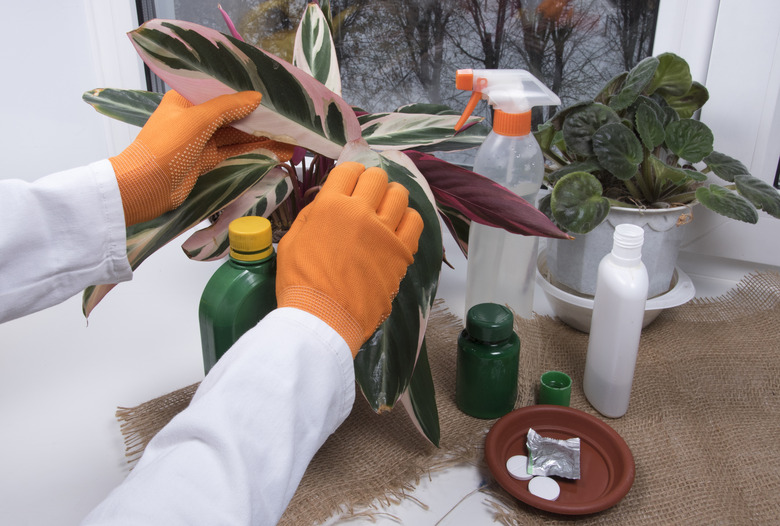Rubbing Alcohol As An Insecticide
We may receive a commission on purchases made from links.
When insects appear on plants in your garden or indoors, figuring out an effective solution depends on different factors. Rubbing alcohol, an inexpensive option and a product you likely have in your first aid cabinet, can be used as an insecticide for certain types of pests.
Determine the Type of Pest
Determine the Type of Pest
Of course, many different types of bugs and insects can attack or infest a plant. Lack of nutrients, too much or too little water, too much sun, or even cultivars that are not disease-resistant can make a plant weak and more susceptible to pests. Knowing the type of pests on your houseplant is important to determine an effective strategy to get rid of them. You are probably familiar with common insects, but if you don't recognize that bug on your plant, you can take a picture, then visit your local university extension office which is usually staffed with experts who can help you. An internet search on the image can also be a useful strategy for identifying bugs.
Rubbing alcohol is an effective option for some insects and bugs, including aphids, mealybugs, or scales.
Do a Test First
Do a Test First
Choose a rubbing alcohol that is 70 percent alcohol or less. Rubbing alcohol is a mixture of alcohol and water, so if it's 70 percent, this means the remainder is 30 percent water. Before applying to multiple parts of the plant, do a check by dabbing just one small section with alcohol with a cotton swab, such as part of a leaf. Wait a couple days to ensure the alcohol did not cause leaf burn, known as phytotoxicity. If you do observe damage, consider trying again with a rubbing alcohol with a lower percentage.
Apply Rubbing Alcohol to the Plant
Apply Rubbing Alcohol to the Plant
If there's no noticeable change, dip a cotton ball or cotton swab in the rubbing alcohol, and apply directly to the pests. Repeat this process if necessary until the infestation disappears. This manual application method can work when there aren't too many pests.
For a broader infestation, spraying the plant with rubbing alcohol can be an option. Consider using a rubbing alcohol with a lower percentage of alcohol, such as 10 to 25 percent, to avoid harming your houseplant. Again, test a small area of the plant and wait a day or two to see if any changes occur; if not, then spray wherever you see pests. You may need to spray multiple times over the course of several days or longer, until the pests have disappeared.
